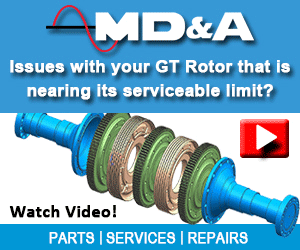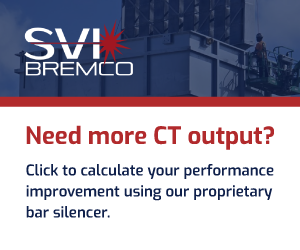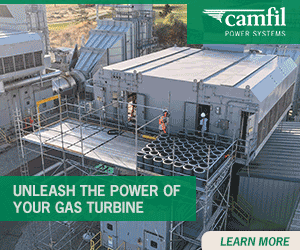 There’s pent up demand for engine-specific knowledge among Alstom gas-turbine (and steam turbine) owner/operators given the OEM’s flagging efforts in customer training as its commercial activities wound down before the sale to GE, and in the months that followed the transfer in ownership. Both users and vendors recognized this and collaborated to develop a conference agenda to meet the unique needs of the AOG community.
There’s pent up demand for engine-specific knowledge among Alstom gas-turbine (and steam turbine) owner/operators given the OEM’s flagging efforts in customer training as its commercial activities wound down before the sale to GE, and in the months that followed the transfer in ownership. Both users and vendors recognized this and collaborated to develop a conference agenda to meet the unique needs of the AOG community.
Integrated into a fast-moving program of nominal half-hour supplier and user presentations, and closed discussion sessions for owners, are no fewer than five training sessions—each at least four hours in length. There are no special charges for attending the workshops. All, plus a tour of Doosan Turbomachinery Services’ La Porte shop to witness repair processes first-hand, are included in the $300 conference fee. Register today.
Here’s the lineup of training sessions, current as of October 26. Check for periodic updates on the organization’s website.
Introduction to Gas Turbine Controls, Emerson Automation Solutions, Monday, January 27, 1 to 5 pm.
Designed for operators, engineers, and managers wanting to learn more about control theory and how it applies to gas turbines. Presentation includes an overview of the universal principles of governor and auxiliary control for GTs with a focus on control components and logic for an Alstom GT11N.
Alstom Generator Training, Mechanical Dynamics & Analysis (MD&A), Monday, January 27, 1 to 5 pm.
Mark Crittendon, engineering manager at MD&A will provide an overview of basic generator design, electrical and mechanical testing for both generator fields and stators, as well as covering some of the operational/maintenance issues that have affected several of the legacy Alstom generators that are coupled to gas turbines.
P13/P14 Blueline Training, Hughes Technical Services, Monday, January 27, 1 to 5 pm and Thursday, January 30, 1 to 5 pm.
Attendees will have two chances to learn from Alstom guru Gary Hughes. HTS specializes in legacy ABB/Alstom gas turbines, controls and electrical systems commissioning, maintenance, troubleshooting and upgrades, mechanical gas and steam turbine commissioning and maintenance, EV and standard combustor tuning and adjustments. An abstract of the content will be posted on the AOG website when available.
Bearing Fundamentals, Pioneer Motor Bearing Co, Thursday, January 30, 1 to 5 pm.
Pioneer Motor Bearing conducted a four-hour training session at the 2019 conference on fluid-film radial and thrust bearings, these oft-forgotten components being critical to reliable turbine operation. Note that authorized repairs of bearings in Alstom equipment are available from GE for both gas and steam turbines and from Pioneer Motor Bearing for steam turbines. Also, that Pioneer is the exclusive US licensee of Alstom intellectual property for the servicing and repair of steam-turbine bearings.
The workshop opened with a backgrounder on the theory and operation of fluid-film bearings—including important material and lubricant properties. Photos of damaged bearings were an eye-opener for many users in attendance, most of whom had never received formal training on bearings from the now-defunct OEM.
The session, led by Dr Lyle Branagan, Pioneer’s engineering manager, got a “two thumbs up” from participants and will be conducted again in 2020. But seating is limited, so be sure to register early. You can do that now on the AOG website. Participation in the bearing seminar is included in the $300 conference registration fee.
Branagan stressed the importance of a careful visual examination of bearings after their removal from a machine because of the opportunity it affords the owner/operator to identify any of several potential conditions of distress. Because the babbitt (white-metal) lining of a bearing is deliberately a renewable, sacrificial layer, refurbishment often is possible to restore the bearing for long-term operation.
Such refurbishment generally is cost-effective even for simple bearings with bore sizes above about 12 in. Of course, if a spare or new bearing from the OEM is not readily available on a timely basis, repair and refurbishment becomes a necessity no matter what the size.
The international group attending the 2019 presentation asked for specific guidance in order to make better decisions regarding whether to continue to operate a variety of Alstom gas and steam turbine/generator bearings or to have them refurbished. Branagan provided rules-of-thumb and guidelines with photographic examples to help in making these “run/repair” determinations.
Moreover, he walked attendees through the specific steps, illustrated during his talk, of babbitt casting and bearing refurbishment. Several participants expressed interest in attending Pioneer’s more detailed course on these topics, available as a three-day, in-house workshop.
A post-training survey revealed that Pioneer’s position as the licensee of Alstom, and now of GE, for the repair of Alstom steam-turbine bearings in the US was not widely known.
Demystifying Varnish, Axel Wegner, C C Jensen Oil Maintenance, Thursday, January 30, 1 to 5 pm.
Presentation will provide a comprehensive update on varnish, including: troubleshooting the problem, methods of varnish removal, oil analysis, and improved-performance validation of the benefits of varnish removal.
Basic GT Metallurgy, Repair Technology, and Condition Assessment, Liburdi Turbine Services, Friday, January 31, 8 am to 5 pm.
Doug Nagy of Liburdi Turbine Services conducted an eight-hour seminar at the 2019 meeting on gas-turbine metallurgy and repair technology for two-dozen attendees—including end users, GT subject-matter experts, and PhD candidates from North Carolina State University. Participants were asked to submit questions in advance regarding specific repair issues faced at their job sites to enhance the value of the session.
This non-commercial training course explained superalloy metallurgy as it applies to gas-turbine components, focusing on component damage experienced from GT service exposure as well as the techniques used to determine the remaining lives of critical hot parts. Protective coatings, advancements in component repair technologies, and repair quality-assurance techniques were included in the syllabus.
Plus, attendees were exposed to several case-study examples and got to participate in an interactive wrap-up session where they developed real-world repair solutions.
This course will be conducted again in 2020. But seating is limited so be sure to register early. The best part is that the seminar is included in the conference registration fee of only $300. Participants will receive an attendance certificate and be eligible to earn eight Professional Development Hours.
Nagy, who has decades of experience in the repair of gas-turbine components, said he designed this course for professionals involved with the technology or business of gas turbines in the oil and gas and power-generation industries—in particular, those with the following responsibilities:
-
- Plant, engineering, asset, technical, maintenance, and/or operations manager.
- Plant, mechanical, production, and/or reliability engineer.
Course outline for 2020 Liburdi workshop:
-
- Introduction: Why repair and refurbish parts?
- Nomenclature: A review of typical GT components and the respective environments they withstand.
- Materials and metallurgy: GT materials and their properties.
- Coatings typically used in gas turbines—such as anti-corrosion, wear surface, and thermal barrier.
- Degradation characteristics of GT components—including creep, low-cycle fatigue, etc, and their effects on GT components.
- Evaluation of used compoents and how to determine the appropriate repair/refurbishment process.
- Refurbishment and repair processes: Procedures and techniques used to restore components to industry standards.
- Quality assurance: Methods and procedures to verify components meet industry standards.
- Vendor selection and verification.
- Case studies and problem-solving: Case studies presented by the instructors to illustrate the process of component repair and refurbishment. The class then will be divided into teams and given components for which they will determine the best repair/refurbishment process.
- Roundtable discussion regarding the latest repair trends and participant questions.





